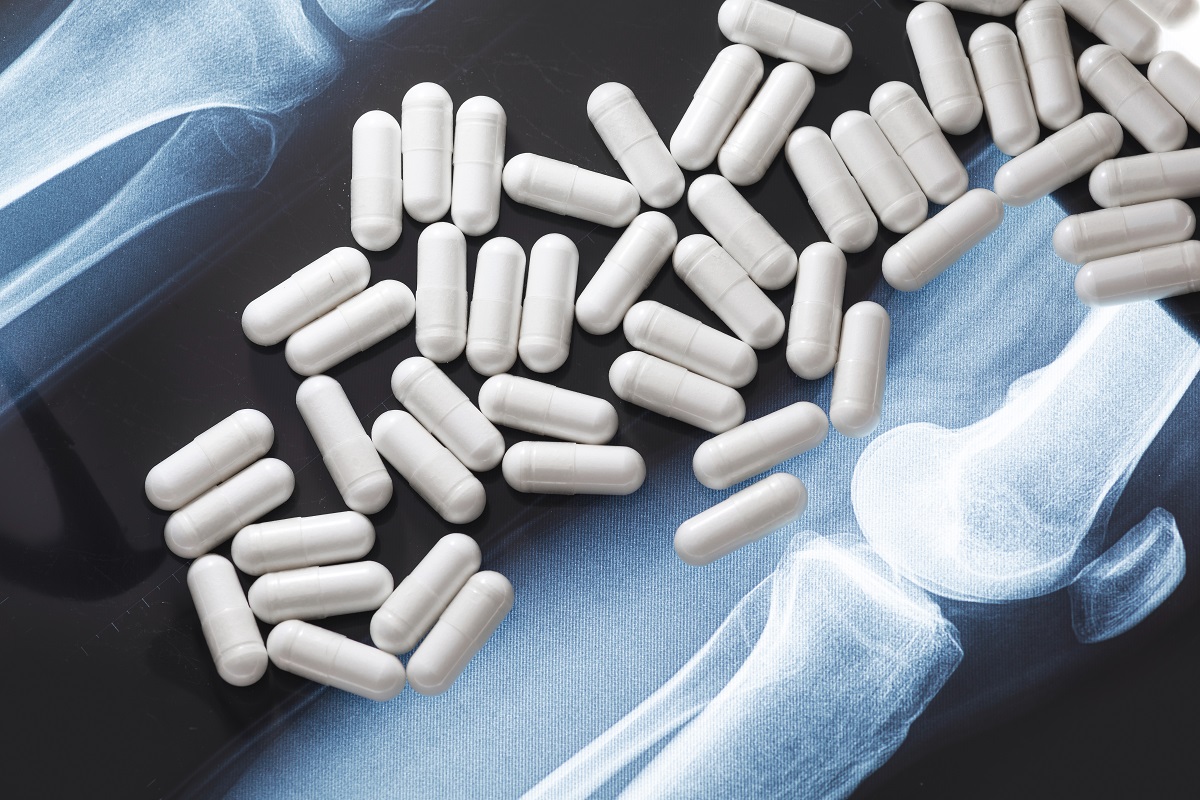Death of the bone tissue is called osteonecrosis or avascular necrosis and it commonly occurs a lack of blood supply. It also may lead to small breaks in the bones that lead the bone to collapse. However, the process that leads to this condition may take years.
The most common causes of osteonecrosis are a broken bone or dislocated joint that blocks the blood flow to the bone sections. Sometimes, avascular necrosis occurs due to long-term or high doses of certain medicines or heavy alcohol drinking.
While anyone may develop this condition, it mostly occurs in people between 30 and 50 years old.
Symptoms
People usually do not have symptoms in the early stages of the disease but if the condition worsens, symptoms may occur. Joint pain happens only when putting weight on them or even when you are lying down.
The pain caused by this condition can be mild or severe and usually appear gradually. People with osteonecrosis often feel pain in the groin center, thigh, or buttock. However, the shoulder, knee, hand, and foot also may be affected.
Sometimes, osteonecrosis happens on both sides (including both hips and knees).
Immediately visit a doctor if joint pain occurs or if you think you experience a broken bone or dislocated joint.
Causes
Reduced or lack of blood flow to the bones commonly causes avascular necrosis. Blood supply is usually interrupted due to the following reasons. Examples include:
- Bone or joint trauma – Injuries including a dislocated joint can cause damage to the nearby blood vessels. Furthermore, certain cancer treatments (such as radiation therapy) also may cause bone weakness and damage to the blood vessels.
- Fatty deposits in the blood vessels – Sometimes, the fat may build up in the blood vessels and reduce blood flow to different structures of the body including the bones.
- Health conditions – People who experience sickle cell anemia and Gaucher’s disease may also develop osteonecrosis.
However, not every time it is possible to detect the exact cause of avascular necrosis. Healthcare providers think that a combination of heavy alcohol drinking, genetics, some medicines, and other health problems could play a role.
Risk Factors
The following factors may increase your risk of developing avascular necrosis. Check below some examples:
- Injuries – For example a hip fracture or dislocation that may lessen blood flow to the bones.
- Steroid use – Those who administer high doses of corticosteroids (such as Prednisone) are at higher risk of developing osteonecrosis. Experts do not fully understand why it happens but they think these medicines increase lipid levels in the blood which leads to decreased blood flow.
- Heavy alcohol drinking – Fatty buildup may occur in the blood vessels of people who misuse alcoholic beverages.
- Bisphosphonate use – Osteonecrosis of the jaw may occur in people who use these medicines for long periods. In most cases, high bisphosphonate doses are used in people with certain health conditions including multiple myeloma and metastatic breast cancer.
- Some treatment options – These include radiation therapy used to treat cancer, organ transplants (such as kidney transplants), and others.
In addition, check some diseases that are usually associated with osteonecrosis:
- Systemic lupus erythematosus
- Sickle cell anemia
- Gaucher’s disease
- HIV/AIDS
- Pancreatitis
- Some cancer types (such as leukemia)
- Decompression sickness
Complications
Those who do not receive treatment for this condition may experience bone collapse or severe arthritis. However, this article does not contain all possible complications of avascular necrosis. For more details, consult with your healthcare professional.
How to Prevent Osteonecrosis?
There are some steps you can take to reduce the risk or prevent osteonecrosis. Examples include:
- Limit or avoid alcohol drinks because it is one of the most common risk factors for this condition.
- Manage high cholesterol
- Discuss with your healthcare professional the risks and benefits of high-dose or long-term steroid use.
- Quit smoking or never begin because tobacco products may also narrow the blood vessels, which leads to reduced blood flow.
Diagnosis
Physicians usually begin the diagnosis with a physical examination to check for joint pain and other irregularities associated with avascular necrosis. They may also perform some tests to confirm the condition and exclude other health problems that cause similar symptoms. These include:
- X-rays – These tests help doctors detect bone changes that often occur in people with advanced osteonecrosis.
- MRI and CT scans – These scans are used to get detailed images of the bones but can be used to detect other health problems.
- Bone scan – During this test, doctors will inject a small amount of radioactive substance and then perform an imaging test to check for abnormalities.
Treatment
The treatment goal is to reduce further damage to the bones, reduce the symptoms, and improve your quality of life. Check below some treatment options usually recommended by doctors for people with avascular necrosis:
Medications
Physicians often prescribe the following medicines to reduce the symptoms in people with early stages of the disease. Examples include:
- NSAIDs (nonsteroidal anti-inflammatory drugs) – These include nonprescription medicines such as Ibuprofen and Naproxen sodium. If previous medicines are not effective for you, doctors may recommend some NSAIDs available by prescription.
- Osteoporosis medicines – This group of medicines may help slow down osteonecrosis progression.
- Cholesterol-lowering medications – Decreasing high cholesterol may improve blood flow and prevent avascular necrosis.
- Medicines that open blood vessels – Physicians usually prescribe Iloprost to improve blood flow to the negatively affected bone.
- Anticoagulants – This group of medicines is also known as blood thinners and is used to prevent blood clots in the vessels that supply the bones with blood.
Therapy
Physicians may also recommend the following therapies along with medicines and other procedures. For example:
- Exercises – Physical activity may help to maintain or improve motion range in the joint.
- Rest – When the disease occurs, rest for a few months may help reduce further bone damage.
- Electrical stimulation – Sometimes, mild electrical impulses may help the body grow new bone to replace the damaged one.
Other Treatment Options
The following procedures are commonly used in people with osteonecrosis because this condition does not cause symptoms in the early stages usually. For example:
- Core decompression – During this procedure, surgeons with remove a part of the inner layer of the bones. Thus, it may help reduce the symptoms (such as pain) and trigger the production of a new healthy bone and new blood vessels.
- Bone transplant (graft) – This surgery type is often used to strengthen the bone area that is negatively affected by osteonecrosis.
- Bone reshaping (osteotomy) – This surgery involves reshaping or the removal of the bone above or below a weight-bearing joint. As a result, it may help avoid joint replacement surgery.
- Joint replacement
- Regenerative medicine treatment – During this procedure, surgeons will remove a sample of dead hipbone and insert stem cells taken from the bone marrow. It may help new bone to grow.
Frequently Asked Questions
What health conditions can be mistaken for osteonecrosis?
These include:
- Lumbar disk herniation
- Hip synovitis or osteoarthritis
- Rheumatoid arthritis and others
For more details, discuss it with your healthcare professional.
What are the main osteonecrosis symptoms?
In most cases, the symptoms do not appear in the early stages of the disease but may happen when the avascular necrosis worsens. For example:
- Skin problems
- Fever
- Pain and swelling
Other symptoms can appear too but previous ones are the first ones that people experience when the disease begins to worsen.
What are the possible complications of avascular necrosis?
There are some complications that may occur in people with osteonecrosis, especially without treatment. Examples include:
- Joint replacement or collapse
- Bone breakdown
- Permanently reduced mobility
- Osteoarthritis
Ask your healthcare professional if you have any other questions.




